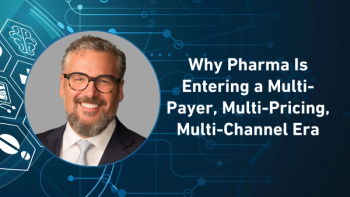
- Pharmaceutical Commerce - January/February 2009
No surprise here: FDA drug oversight is now a 'high risk' government operation
FDA’s management of drug and device safety enters GAO’s biennial watch list
In keeping with each start of a new Congress, the federal Government Accountability Office has listed (since 1990) government operations that are at risk for fraud or abuse, are not meeting stated objectives, or have significant national consequences. Think of it as something of a Sarbanes-Oxley-style accounting review: GAO looks for “material weaknesses” in how programs are run and reported, and then tags them for further attention.
During Inauguration Week, GAO issued the
- Inspecting foreign establishments manufacturing drugs or medical devices
- Monitoring postmarket drug safety
- Reviewing advertising and promotional materials
- Overseeing clinical trials of investigational new drugs
None of these is particularly surprising, but the task before the new FDA leadership is daunting: foreign establishments have been on a schedule to be reviewed (if at all) once in 13 years (and FDA isn’t sure of just how many foreign establishments there are); the FDA Division of Drug Marketing, Advertising and Communications (DDMAC) had 68,000 separate promotions for drugs submitted to it in 2007 (at a time when it had a staff of 44 dedicated to this task). Another problem lurking in the woodwork is that hardly any clinical trial sites are inspected, raising concerns over both the safety of trial subjects, and the quality of data generated thereby.
Some of these shortcomings have been addressed both by the FDA Amendments Act of 2007, and by subsequent FDA actions; industry practices like the Risk Evaluation Mitigation Strategy (REMS) are becoming the norm. But there’s a long way to go; last year, an expanded, industry-funded promotional-materials review program died for lack of support.
It’s an interesting parlor game, too, to consider what didn’t make the GAO list: drug abuse from unauthorized Internet sites; supply chain security and integrity; medication errors (which is in sore need of national attention, but over which FDA has only tangential authority). Medicare has been on the GAO list since its first report, and Medicaid joined the list in 2003, in case you were wondering.
GAO notes that medicine, biologics and medical devices were a $440-billion industry in 2006 (now well over $500 billion). It remains the lynchpin not just of U.S. healthcare, but of the world, in turn making FDA the measure of worldwide medicine. We hope the new Congress, and the new Administration, recognize this critical role.
Articles in this issue
over 16 years ago
Closing The Circle On Patient Adherenceover 16 years ago
3PLs Rise in Forward-Thinking Supply Chain Modelsover 16 years ago
A Pitched Battle in Cardiovascular Drug Marketingover 16 years ago
Wyeth Loses Supreme Court Case Over 'Implied' Pre-Emptionover 16 years ago
Syringe Design Gets a Makeoverover 16 years ago
Refinements in Cold Chain Secondary Packagingover 16 years ago
Inmar Rebrands Reverse-Logistics and Related Business Unitsover 16 years ago
The Packaging Contribution to Patient Adherenceover 16 years ago
Moving the Dial on Patient AdherenceNewsletter
Stay ahead in the life sciences industry with Pharmaceutical Commerce, the latest news, trends, and strategies in drug distribution, commercialization, and market access.




